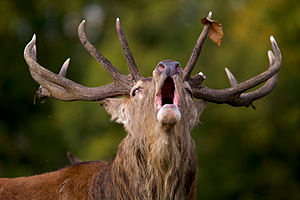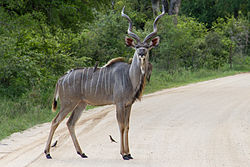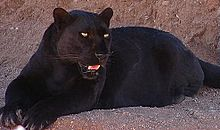SITVIT Bovis, online consultation of the WorldWide database of M. bovis.
SITVIT Bovis is a genotyping molecular markers database focusing on Mycobacterium bovis. It contains major types of molecular markers such as: Spoligotypes, 12-loci MIRU-VNTR, 15-loci MIRU-VNTR, and 5-locus ETRs markers. SITVIT Bovis contains information on 25,741 isolates corresponding to 60 countries of patient or animal origin and 75 countries of isolation. We report a total of 1000 spoligotype patterns (corresponding to 25,741 isolates) - grouped into 537 shared-types or spoligotype international types (SIT) containing 25,278 isolates and 463 orphan patterns. The publicly accessible database also contains a total of 119 12-loci mycobacterial interspersed repetitive units-variable number of tandem repeats (MIRU-VNTRs) patterns from 344 isolates - grouped into 41 shared-types or 12-MIRU international types (12-MIT); and a total of 60 15-loci MIRU patterns from 104 isolates - grouped into 11 shared-types or 15-MIRU international types (15-MIT). Lastly, data on 5-locus exact tandem repeats (ETRs) were available on 415 isolates; a total of 109 different VNTR patterns were observed - split into 55 shared-types or VNTR International Types (VIT) containing 361 isolates and 54 orphans. Furthermore, significant differences were noted when comparing data on age and gender of human isolates. Mapping and phylogenetical analysis of genotyping data along with information on the host provided an interesting insight into phylogeographical specificities of M. bovis.
Quantitative description of SITVIT Bovis
SITVIT2 database now contains information on 25, 741 entries.
This table is a description of SITVIT Bovis database as consulted on 15 March 2017.
| Genotyping marker | Number of distinct patterns | Number of strains | Number of IT | Number of ITed strains | Number of orphan strains | Percentage of orphan strains | Number of countries of isolation | |
|---|---|---|---|---|---|---|---|---|
| Spoligotype | 1 000 | 25 741 | 537 | 25 278 | 463 | 1.8 | 75 | 75 |
| 12-loci MIRU | 119 | 344 | 41 | 235 | 109 | 31.7 | 19 | |
| 15-loci MIRU | 60 | 104 | 11 | 30 | 74 | 71.2 | 4 | |
| 5 ETRs (VNTR) | 109 | 415 | 55 | 361 | 54 | 13.0 | 17 | |
Publications
Contributors
Full list of contributors is available upon request.
Global Distribution of lineages and host species in SITVIT Bovis
Data recorded in SITVIT Bovis database as consulted on 15 March 2017.
The figure can be zoomed and dowloaded as a PDF file. if the figure is not reachable, please download Adobe Reader or a similar application software.
The PNG figure is also downloadable here
Correspondence table between SIT and SB number for spoligotypes contained in SITVIT Bovis
List of Spoligotype patterns with their corresponding Spoligotype International Type (SIT) or SB number provided by Mbovis.org database (Smith and Upton, 2012), and available in SITVIT Bovis database.
Download the list here.
Correspondence table between SIT and SB number for spoligotypes contained in SITVIT Bovis
List of Mammalian hosts recorded in SITVIT Bovis database.
| Brief Description of Host | Photography |
|---|---|
| - Human: Like all mammals, humans (Homo sapiens) are a diploid eukaryotic species. Each somatic cell has two sets of 23 chromosomes, each set received from one parent; gametes have only one set of chromosomes, which is a mixture of the two parental sets. Like other mammals, humans have an XY sex-determination system, so that females have the sex chromosomes XX and males have XY. One human genome was sequenced in full in 2003, and currently efforts are being made to achieve a sample of the genetic diversity of the species (see International HapMap Project). Reference |  |
| - Cattle: Cattle (colloquially cows) are the most common type of large domesticated ungulates. They are a prominent modern member of the subfamily Bovinae, are the most widespread species of the genus Bos, and are most commonly classified collectively as Bos taurus. Cattle are raised as livestock for meat (beef and veal), as dairy animals for milk and other dairy products, and as draft animals (oxen or bullocks) (pulling carts, plows and the like). Other products include leather and dung for manure or fuel. In some regions, such as parts of India, cattle have significant religious meaning. In 2009, cattle became the first livestock animal to have a fully mapped genome. Reference |  |
| - Buffalo: Bison (also called Buffalo) are large, even-toed ungulates in the genus Bison within the subfamily Bovinae. There are two extant and four extinct species recognized. Of the four extinct species, three were North American: Bison antiquus, B. latifrons, and B. occidentalis. The fourth, Bison priscus, ranged across steppe environments from Western Europe, through Central Asia, and onto North America. There are two surviving species: the American bison, Bison bison, found only in North America, is the most numerous. (Although sometimes referred to as a "buffalo", it is only distantly related to the true buffalo.) The bovine family (Taurids and Bisonids) diverged from the common ancestral line with water buffalo and African buffalo about 5 to 10 million years ago. Thereafter, the family lineage of bison and taurine cattle does not appear to be a straightforward "tree" structure as is often depicted in much evolution, because there is evidence of interbreeding and crossbreeding between different species and members within this family, even many millions of years after their ancestors separated into different species. Reference |  A group of images by Eadweard Muybridge, set to motion to illustrate the movement of the bison |
| - Pig: A pig is any of the animals in the genus Sus, within the Suidae family of even-toed ungulates. Pigs include the domestic pig and its ancestor, the common Eurasian wild boar (Sus scrofa), along with other species; related creatures outside the genus include the babirusa and the warthog. Pigs, like all suids, are native to the Eurasian and African continents. Juvenile pigs are known as piglets. Pigs are omnivores and are highly social and intelligent animals. Reference |  |
| - Wild boar: Wild boar or wild pig (Sus scrofa) is a species of the pig genus Sus, part of the biological family Suidae. The species includes many subspecies. It is the wild ancestor of the domestic pig, an animal with which it freely hybridises. Wild boar are native across much of Northern and Central Europe, the Mediterranean region (including North Africa's Atlas Mountains) and much of Asia, including Japan and as far south as Indonesia. Populations have also been artificially introduced in some parts of the world, most notably the Americas and Australasia, where they are regarded as both an important food resource and an environmental threat. Reference |  |
| - Feral pig: Domestic pigs can escape and quite readily become feral, and feral populations are problematic in several ways. They can cause significant amount of damage to trees and other vegetation and may feed on the eggs of ground-nesting birds and turtles. Feral pigs often interbreed with wild boar, producing descendants similar in appearance to wild boar; these can then be difficult to distinguish from natural or introduced true wild boar. Reference |  |
| - Pot-bellied pig: The pot-bellied pig is a breed of domesticated pig originating in Vietnam. Because pot-bellied pigs are the same species as ordinary farmyard pigs and wild boars, they are capable of interbreeding. Most pot-bellied pigs have been crossed with various farm pig species. A 2004 study by Thuy revealed extreme genetic diversity in indigenous Vietnamese Pot-bellied pigs. They were also genetically different from each other according to location of origin in Vietnam. Pig breeds from developed countries were refined over centuries to a specific genetic make-up. Reference |  Pot-bellied pig. |
| - Elk: The elk or wapiti (Cervus canadensis) is one of the largest species of the Cervidae or deer family in the world, and one of the largest land mammals in North America and eastern Asia. It was long believed to be a subspecies of the European red deer (Cervus elaphus), but evidence from a number of mitochondrial DNA genetic studies beginning in 1998 indicate that the two are distinct species. Early European explorers in North America, who were familiar with the smaller red deer of Europe, thought that the larger North American animal resembled a moose, and consequently gave it the name elk, which is the common European name for moose. Reference |  |
| - Red deer: The red deer (Cervus elaphus) is one of the largest deer species. The red deer inhabits most of Europe, the Caucasus Mountains region, Asia Minor, Iran, parts of western Asia, and central Asia. It also inhabits the Atlas Mountains region between Morocco and Tunisia in northwestern Africa, being the only species of deer to inhabit Africa. Red deer have been introduced to other areas, including Australia, New Zealand and Argentina. The red deer is the fourth-largest deer species behind moose, elk and sambar deer. It is a ruminant, eating its food in two stages and having an even number of toes on each hoof, like camels, goats and cattle. European red deer have a relatively long tail compared to their Asian and North American relatives. Reference |  |
| - White-tailed deer: The white-tailed deer (Odocoileus virginianus), also known as the whitetail, is a medium-sized deer native to the United States, Canada, Mexico, Central America, and South America as far south as Peru and Bolivia. It has also been introduced to New Zealand, Cuba, Jamaica, Hispaniola, Puerto Rico, Lesser Antilles and some countries in Europe, such as Finland, the Czech Republic, and Serbia. In the Americas, it is the most widely distributed wild ungulate. Until recently, some taxonomists have attempted to separate white-tailed deer into a host of subspecies, based largely in morphological differences. Genetic studies, however, suggest that there are fewer subspecies within the animal's range, as compared to the 30 to 40 subspecies that some scientists described in the last century. Reference |  |
| - Antelope: An antelope is an even-toed ungulate species indigenous to various regions in Africa and Eurasia. Antelopes comprise a wastebasket taxon (miscellaneous group) within the family Bovidae, encompassing those Old World species that are neither cattle, sheep, water buffalo, bison, nor goats. A group of antelope is called a herd. More species of antelope are native to Africa than to any other continent, but some occur in Asia. The Arabian Peninsula is home to the Arabian oryx and Dorcas gazelle. India is home to the nilgai, chinkara, blackbuck, Tibetan antelope, and four-horned antelope, while Russia and Central Asia have the Tibetan antelope, and saiga antelope. Reference |  A blackbuck antelope at the Blackbuck National Park in Gujarat, India |
| - Kudus: The kudus are two species of antelope of the genus Tragelaphus: (i) Lesser kudu, Tragelaphus imberbis, of eastern Africa; and (ii) Greater kudu, Tragelaphus strepsiceros, of eastern and southern Africa. Kudus are highly susceptible to rabies in times of extended drought. They have been known to enter farm houses and other buildings when infected. Infected animals appear tame and have a distinct frothing at the mouth. They are fearless and bulls may sometimes attack humans who get too close to them. Reference |  Male greater kudu |
| - Goat: The domestic goat (Capra aegagrus hircus) is a subspecies of goat domesticated from the wild goat of southwest Asia and Eastern Europe. The goat is a member of the family Bovidae and is closely related to the sheep as both are in the goat-antelope subfamily Caprinae. Goats are among the earliest animals domesticated by humans. The most recent genetic analysis confirms the archaeological evidence that the wild Bezoar ibex of the Zagros Mountains are the likely origin of almost all domestic goats today. Neolithic farmers began to herd wild goats for easy access to milk and meat, primarily, as well as for their dung, which was used as fuel, and their bones, hair, and sinew for clothing, building, and tools. While goats are generally considered hardy animals and in many situations receive little medical care, they are subject to a number of diseases. Reference |  A two-month-old goat kid in a field of capeweed. |
| - Lion: The lion (Panthera leo) is one of the five big cats in the genus Panthera and a member of the family Felidae. With some males exceeding 250 kg (550 lb) in weight, it is the second-largest living cat after the tiger. Wild lions currently exist in sub-Saharan Africa and in Asia (where an endangered remnant population resides in Gir Forest National Park in India) while other types of lions have disappeared from North Africa and Southwest Asia in historic times. Until the late Pleistocene, about 10,000 years ago, the lion was the most widespread large land mammal after humans. The lion's closest relatives are the other species of the genus Panthera: the tiger, the jaguar, and the leopard. P. leo evolved in Africa between 1 million and 800,000 years ago, before spreading throughout the Holarctic region. Reference |  Adult male lion of the Okondeka pride stretching in Etosha National Park. |
| - Leopard: The leopard (Panthera pardus) is one of the five "big cats" in the genus Panthera. It is a member of the Felidae family with a wide range in some parts of sub-Saharan Africa, West Asia, the Middle East, South and Southeast Asia to Siberia. Compared to other members of the Felidae, the leopard has relatively short legs and a long body with a large skull. It is similar in appearance to the jaguar, but is smaller and more slightly built. Its fur is marked with rosettes similar to those of the jaguar, but the leopard's rosettes are smaller and more densely packed, and do not usually have central spots as the jaguars do. Both leopards and jaguars that are melanistic are known as black panthers. |  Melanistic leopard or "black panther" |
| - Cat: The domestic cat (Felis catus or Felis silvestris catus) is a small, usually furry, domesticated, and carnivorous mammal. It is often called the housecat when kept as an indoor pet, or simply the cat when there is no need to distinguish it from other felids and felines. Cats are often valued by humans for companionship, and their ability to hunt vermin and household pests. The felids are a rapidly evolving family of mammals that share a common ancestor only 10-15 million years ago, and include, in addition to the domestic cat, lions, tigers, cougars, and many others. Within this family, domestic cats (Felis catus) are part of the genus Felis, which is a group of small cats containing about seven species (depending upon classification scheme). Reference |  The wildcat, Felis silvestris, is the ancestor of the domestic cat. |
| - Coyote: The coyote (Canis latrans) is a canid native to North America. It is a smaller, more basal animal than its close relative, the gray wolf, being roughly the North American equivalent to the old world golden jackal, though it is larger and more predatory in nature. It is listed as "least concern" by the IUCN, on account of its wide distribution and abundance throughout North America, Mexico and into Central America. It is a highly versatile species, whose range has expanded amidst human environmental modification. This expansion is ongoing, and it may one day reach South America, as shown by the animal's presence beyond the Panama Canal in 2013. Modern phylogenetics places the coyote between the gray wolf and golden jackal. Reference |  Coyote from Yosemite National Park, California; and phylogenetic tree illustrating its similar species. |
| - Badger: Badgers are short-legged omnivores in the family Mustelidae which also includes the otters, polecats, weasels and wolverines. The 11 species of badger are grouped in three subfamilies: Melinae (9 Eurasian badgers), Mellivorinae (the honey badger or ratel) and Taxideinae (the American badger). The Asiatic stink badgers of the genus Mydaus were formerly included within Melinae (and thus Mustelidae), but recent genetic evidence indicates these are actually members of the skunk family, placing them in the taxonomic family Mephitidae. Badgers include the species in the genera Meles, Arctonyx, Taxidea and Mellivora. Reference |  An adult female (sow) American badger |
| - Hyena: Hyenas or hyaenas are the animals of the family Hyaenidae of the feliform suborder of the Carnivora. With only four species, it is the fifth-smallest biological family in the Carnivora, and one of the smallest in the class Mammalia. Despite their low diversity, hyenas are unique and vital components to most African ecosystems. Although phylogenetically close to felines and viverrids, hyenas are behaviourally and morphologically similar to canines in several aspects; both hyenas and canines are nonarboreal, cursorial hunters that catch prey with their teeth rather than claws. Reference |  A spotted hyena of subfamily Hyaeninae |
| - Baboon: Baboons are African and Arabian Old World monkeys belonging to the genus Papio, part of the subfamily Cercopithecinae. The five species are some of the largest non-hominoid members of the primate order; only the mandrill and the drill are larger. Previously, the closely related gelada (genus Theropithecus) and the two species (mandrill and drill) of genus Mandrillus were grouped in the same genus, and these Old World monkeys are still often referred to as baboons in everyday speech. They range in size and weight depending on species. Reference |  Face of Hamadryas baboon (Papio hamadryas) |
Note that M. bovis species has been isolated from a wider range of other animals. SITVIT Bovis does not show the completeness of all animals which could be infected by the disease

